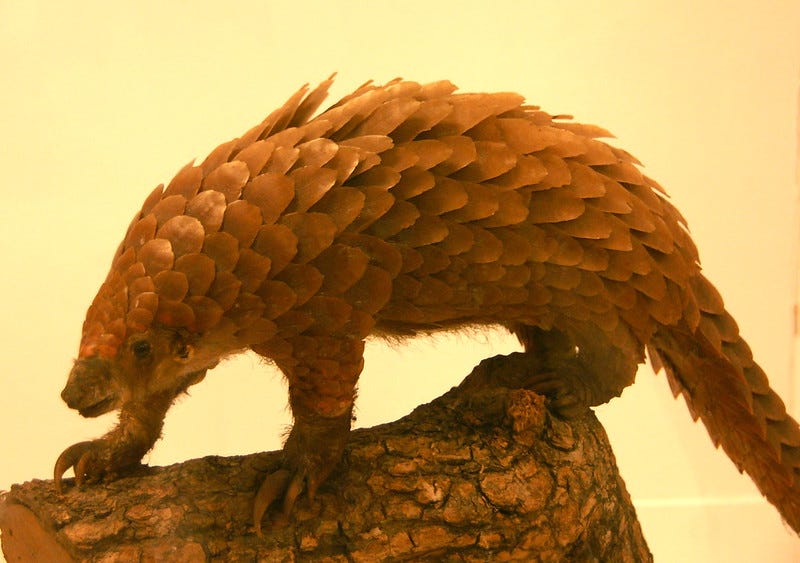he infectious disease of COVID-19 was first identified in Wuhan, China in December 2019. As we all know, it has since spread globally and is thus considered a pandemic. COVID-19 is caused by the severe acute respiratory syndrome coronavirus 2 (SARS-CoV-2). This pathogen is generally thought to have originated in bats, since this has been the case in many other viral pandemics. However, the search for intermediate hosts is still ongoing, and the pangolin has often been pointed to as a suspect. But recent research supports the animal’s innocence.
The Charge
Before we dive into the case of the pangolin, a fair question is: what is the crime we are accusing it of? Many animals carry viruses, friendly and violent. These usually don’t jump between species, as they are ill-suited to new bodies. However, it still happens occasionally, through close contact with body fluids. When the recipients are human, the virus is called ‘zoonotic’. Once a virus has spread to a new host, it starts adapting to it. The pathogen is often more damaging after such transmission: the new host, unlike the original one, has not evolved in an arms-race together with the virus. Thus, its bodies resistance lags behind. This is the reason people have developed rabies or Ebola after zoonosis, but the original bats were less affected by the virus. They have had the time to tackle the virus over many years.
The Mystery


Rhinolophus affinis, (intermediate horseshoe bat): the probable prime carrier of SARS-CoV-2 (‘coronavirus’) Photo by Naturalis Biodiversity Center
That being said, bats have been the source of earlier viruses like SARS-CoV and MERS-CoV, which were highly problematic for us humans. As for SARS-CoV-2 (better known as ‘the coronavirus’), earlier research has shown the virus probably also arose in bats, and more specifically in the species Rhinolophus affinis. However, direct contact between humans and bats is very rare. It is therefore likely an intermediate host has played a role (as was also the case for MERS and SARS). Many fingers have been pointed to suspects already: for instance, snakes and raccoon dogs. The latest candidate was the pangolin. What makes this animal suspicious?
The Suspect


Photo by Romana Klee on Flickr
Pangolins are anteaters found across Africa and Asia. The mammals are one of the world’s most trafficked animals, mostly due to the many protective scales covering their bodies. In Asia, for example, these scales are removed by boiling the pangolins, whereafter they are used for tailoring or traditional medical practices. This is actually the first reason pangolins were considered suspects in SARS-CoV-2 transmission to humans. People have been in close contact with them at places where their flesh and scales were sold, such as the Wuhan market. Besides, pangolins are infamous as natural hosts of many viruses. Finally, the recent study has shown that a certain pangolin virus shares the same binding receptors (‘suction cups’) as SARS-CoV-2 for entering and infecting host cells.
#science #animals #virus #covid19 #biology #data science
